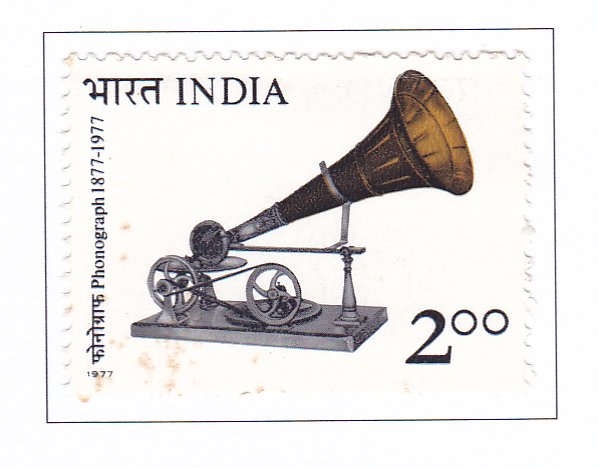Phonograph

Technical Data
| Date of Issue | July 20, 1977 |
|---|---|
| Denomination | Rs. 2 |
| Quantity | 2,000,000 |
| Perforation | comb 13 |
| Printer | Security Printing Press, Nashik |
| Watermark | No Watermark |
| Colors | Multicolor |
| Catalog Codes |
Michel IN 727 Stamp Number IN 764 Yvert et Tellier IN 524 Stanley Gibbons IN 854 |
| Themes | Anniversaries and Jubilees | Inventions |
The year 1977 marks the 100th anniversary of the recorded sound, a groundbreaking invention Phonograph that has profoundly impacted social structures and lifestyles for the betterment of humanity. In April 1877, Charles Cros, a French poet and inventor known for his contributions to color photography, submitted a proposal to the Academic de Sciences in Paris for a machine capable of recording and playing back sound. Around the same time, Thomas Alva Edison, while experimenting with telegraph signal transmission, independently discovered a method for recording and replaying intelligible words. Legend has it that the first successful recording, to the astonishment of listeners, was the nursery rhyme “Mary Had a Little Lamb.”
On December 24, 1877, Edison applied for a patent for his invention, which was eventually granted, making it the first patent to cover the means of recording and replaying sound. Concurrently, in the same year, Emile Berliner developed a method for mass-producing recorded discs quickly and affordably, earning him the title of the “father of the Record Business.” In May 1888, Berliner demonstrated a working prototype of a “disc-playing” gramophone, and by 1893, gramophones were being offered for sale to the public.
With the advent of the gramophone, a new era had dawned, revolutionizing the way people experienced and enjoyed music. In recognition of this monumental invention, the Indian Posts and Telegraphs Department is pleased to commemorate the centenary of the Phonograph by issuing a postage stamp.
